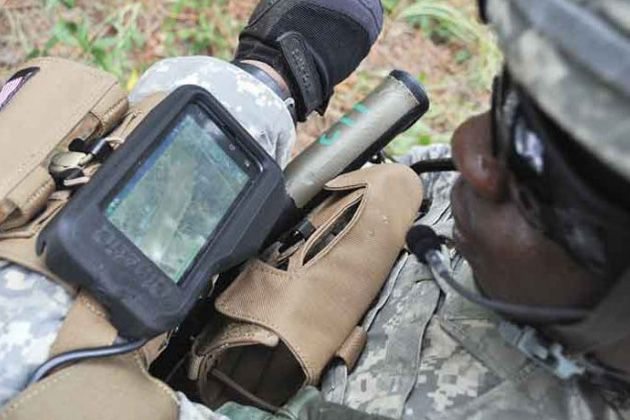Raytheon’s Mobile Ad hoc Interoperability Network GATEway (MAINGATE) radio system successfully provided tactical networking capabilities at two major U.S. Army exercises, giving soldiers reliable battlefield information.
During the recent Army Expeditionary Warrior Experiment (AEWE) at Fort Benning, Ga., MAINGATE provided the backbone for wideband networking. It also successfully performed as an alternative to the cancelled Ground Mobile Radio program during the Network Integration Evaluation (NIE) at Fort Bliss, Texas. During the testing, MAINGATE simultaneously provided multiple channels of real-time video, situational awareness, chat and other applications.
Soldiers at the squad level reliably received multiple unmanned aerial vehicle video feeds and other high-bandwidth data services from the battalion to the tactical edge. MAINGATE provided needed capacity for reliable connectivity among cellular networks, hand-held radios and the Warfighter Information Network – Tactical (WIN-T) system. It also allowed soldiers to integrate information across battle command systems and sensors.
“During the entire AEWE event, Raytheon’s network provided the Experimental Force soldiers with a very reliable high-speed backbone that did not require any soldier or field representative intervention,” said Harry Lubin, chief of the Experimentation Branch at Fort Benning’s Maneuver Battle Lab. “It just worked the whole time, allowing us to focus on the soldier technologies,” he added.
MAINGATE is comprised of a high-throughput radio that uses the Next Generation Mobile Ad Hoc Networking Waveform and a gateway that enables seamless battlefield connectivity. MAINGATE is a mature, off-the-shelf system in production today, with more than 100 units currently deployed in theater.
The non-proprietary waveform provided 10 times more network capacity and supported four times more nodes than competing radios at the NIE. And, it exceeds wideband networking requirements in the upcoming Mid-Tier Networking Vehicular Radio solicitation.
“Giving our soldiers that added edge is a critical feature of MAINGATE,” said Scott Whatmough, vice president of Integrated Communication Systems for Raytheon’s Network Centric Systems business.
“We filled a gap no one else can fill today,” he added. “We look forward to continuing our participation in the next NIE phase, 12.2, to build on our Internet protocol-based networking experience to deliver the most advanced networks at a much lower cost than other systems in development today.”











